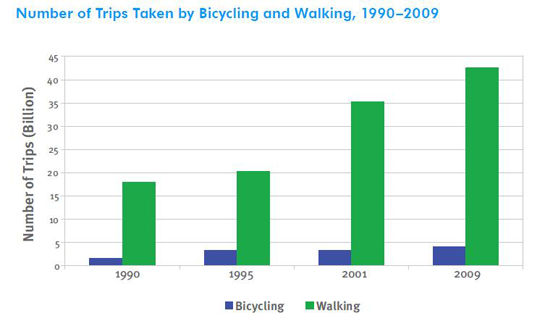We Could All Stand to Lose Some Weight

New research suggests that standing—as opposed to sitting—most of the day can significantly increase the number of calories burned without significantly increasing appetite. This is the conclusion of an as-yet unpublished study by researchers at the University of Massachusetts at Amherst, who asked a group of volunteers to spend one day sitting (even using a wheelchair to go to the bathroom) and another day standing (“Not doing anything in particular,” according to lead researcher Barry Braun, Ph.D.).
The difference in caloric expenditure, Braun told The New York Times, amounted to “hundreds of calories,” but without the subsequent increase in appetite that often accompanies an increase in activity level. Researchers believe this supports the idea that increased daily activity—even if it is low- to-moderate intensity—can go a long way toward promoting weight-loss efforts.
Sources: “Weighing the Evidence,” by Gretchen Reynolds. http://www.nytimes.com/2010/04/18/magazine/18exercise-t.html
UMASS Amherst Energy Metabolism Laboratory. http://www-unix.oit.umass.edu/~braunlab/index.htm
Less Television Time = More Calories Burned

Kids aren’t the only ones who can benefit from watching less television. A study published in the Archives of Internal Medicine suggests that adults who cut their television viewing in half increase their energy expenditure by an average of more than 120 calories per day.
Researchers at the Stanford Prevention Research Center and the University of Vermont followed 36 overweight adults that watched an average of five hours of television per day. The group that cut their TV time in half burned, on average, 120 more calories per day, which is about the equivalent of walking more than a mile. More research is needed to determine if these short-term changes will translate into long-term weight loss or maintenance.
Interestingly, studies of children and television viewing reveal similar effects on energy balance. Rather than increasing the number of calories burned, however, children that reduce their television time tend to consume fewer calories, perhaps because of fewer advertisement-induced cravings.
Source: Otten, J., et al. (2009). Effects of television viewing reduction on energy intake and expenditure in overweight and obese adults. Archives of Internal Medicine, 169, 22, 2109–2115. http://archinte.ama-assn.org/cgi/content/abstract/169/22/2109
More Americans Hitting the Pavement
Finally, some good news about Americans’ activity levels. The Federal Highway Administration recently released the results of its 15-year study of national biking and walking trends and it appears Americans are hitting the streets and sidewalks in record numbers. The study looked at how many walking and biking trips Americans took each year and, from 1990 to 2009, the number of walking trips increased from 18 billion to 42.5 billion, while the number of bike trips increased from 1.7 billion to 4 billion.

In 1994, walking and bicycling comprised less than 8 percent of all “travel trips.” While many “trips” are fewer than 3 miles, 72 percent of the time they are made in vehicles. By 2009, the percentage of trips made on foot or by bicycle, regardless of length, increased to nearly 12 percent. While falling short of the original goal of nearly 16 percent, the results of the study are nonetheless encouraging. Furthermore, during the same timeframe, the number of pedestrians and bicyclists killed decreased dramatically, indicating that these modes of transportation are much safer than they used to be. Increasing public safety on the roads by creating safe routes to school and developing communities that are more friendly to walkers and cyclers continues to be a high priority for the US Department of Transportation.
Source: “The National Walking and Bicycling Study: A 15-Year Report.” http://drusilla.hsrc.unc.edu/cms/downloads/15-year_report.pdf